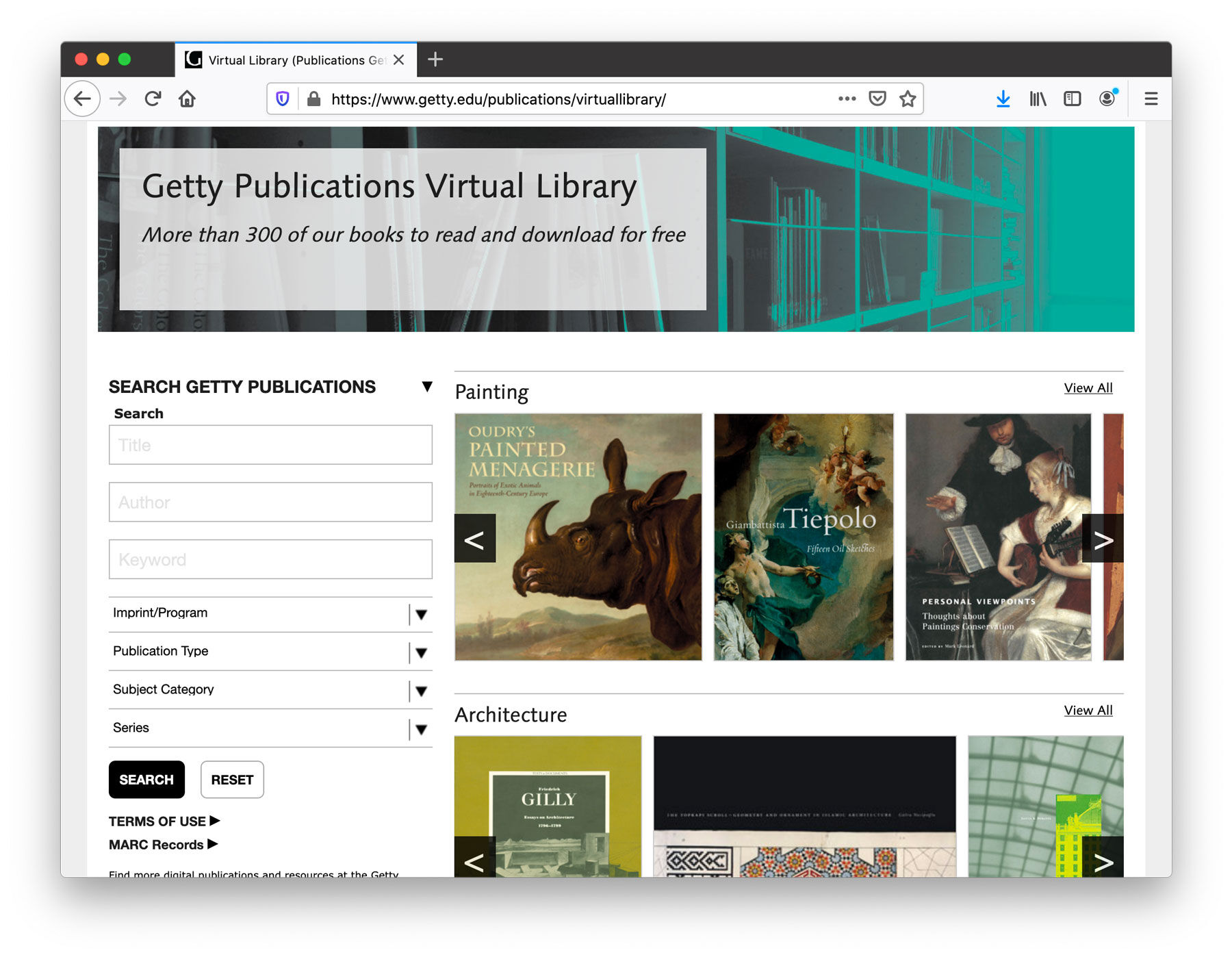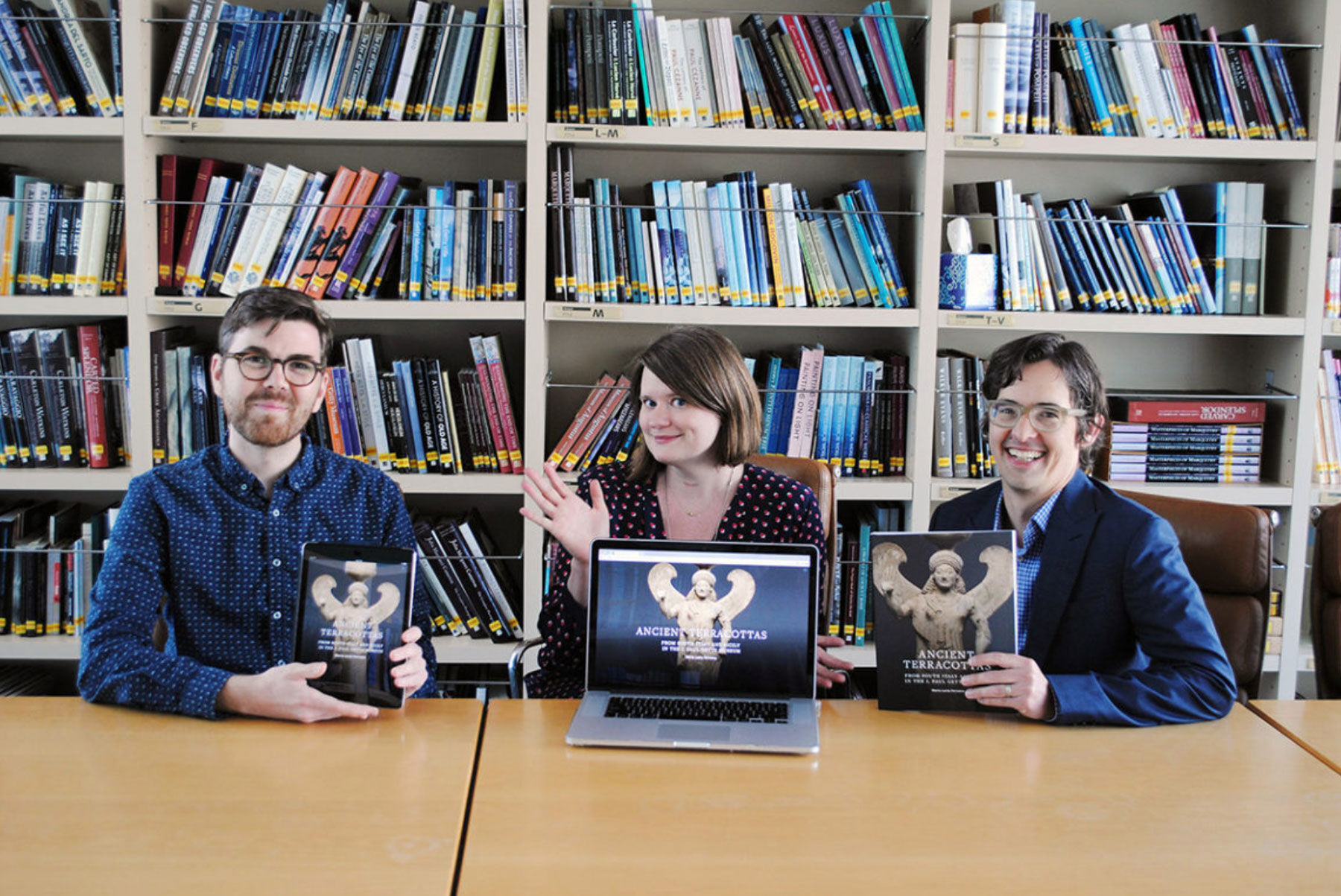History
View a timeline of key milestones in Quire’s development
For over sixty years, Getty has celebrated the world’s artistic legacy through the publication of award-winning books and journals. Over the last two decades, the internet has become a vital platform for creating and disseminating critical scholarship online. Yet, the field of digital publishing still lacks reliable, affordable, and sustainable tools for presenting visually rich narratives that are globally accessible across devices and borders. Getty is uniquely positioned to build on its expertise in the field and advance this effort. Keep reading to learn how Quire evolved as the cornerstone of the institution’s pioneering digital publishing work.
2009
Getty Foundation launches the Online Scholarly Catalogue Initiative (OSCI), a partnership between eight museums, exploring digital solutions to the high costs, limited access, and challenges of producing and updating scholarly publications.
2012
Getty Publications experiments with a number of different digital formats, including EPUB and MOBI e-books, a mobile app, an online collection catalogue, and two titles created in Apple’s iBooks Author tool (Visions of Tondal and Looking East).
2013
Getty Publications begins investing in full-time digital publishing staff. Greg Albers, a leading figure in digital art book publishing, joins Getty as the Digital Publications Manager.
2014
Getty launches its Virtual Library featuring 300 of its past books available to read and download as free PDFs. Five hundred thousand copies have been downloaded to date.
Getty Publications hires its first Digital Publications Developer, Eric Gardner.

2016
Getty publishes its first multiformat collection catalogue, Ancient Terracottas. The publication is made available online and in e-book and print editions. Custom built with the Middleman static site generator, Terracottas serves as a precursor to future Quire titles.
Also released this year are Roman Mosaics and the third edition of Introduction to Metadata. ARLIS/NA’s Multimedia & Technology Reviews writes that Roman Mosaics has a “dynamic design that encourages further discovery and scholarship.”
Getty Publications editor, Ruth Evans Lane, writes an article, “An Editor’s View of Digital Publishing,” for Getty’s blog, The Iris, detailing her experience working on Ancient Terracottas and Roman Mosaics.

2017
OSCI concludes. While the program transformed the digital publishing landscape for museums notable challenges remained, particularly around the discoverability, longevity, and objectness of digital catalogues. (Read the full OSCI Final Report.)
Greg Albers and Eric Gardner begin building Quire with the goal of enabling other museums and publishers to do multiformat publishing. Albers and Gardner envision a free and flexible tool to create beautiful, accessible, discoverable, and enduring publications.
Getty uses an early Quire prototype to develop and publish Artistry in Bronze.
The first in-person Quire workshop takes place at MCN (Museum Computer Network) in Pittsburgh.
2018
Early successes with the development of Quire encourage Getty to move the tool towards an open-source model. Beta access is enabled, and over fifty new community members sign-up as beta testers within the first year.
As a result of the successful MCN Quire workshop in 2017, Journal 18, the first external Quire publication, launches.
Developer Eric Gardner leaves Getty Publications. From Getty’s centralized digital department, David Newbury (Head of Software) and Mantas Andrijauskas and Nick Hulea (Software Engineers) work as part of the Quire core team.
2019
A major release of Quire comes out with a new theme—designed by Ramon Tapales (Lead User Experience Designer)—as well as improved figure handling, audio embedding, and page layout options.
Getty releases three additional Quire publications, including the first-ever born-digital version of the century-old reference series, Corpus Vasorum Antiquorum (CVA).
Matthew Hrudka (Software Architect) joins Getty and Quire’s core team as the lead maintainer.
Minneapolis Institute of Art publishes its first Quire title, Alcohol’s Empire: Distilled Spirits in the 1700s Atlantic World, led by project manager and designer Kris Thayer.
A landmark cross-institutional user study of online museum collection catalogues is published by the Art Institute of Chicago, the J. Paul Getty Museum, the National Gallery of Art, and the Philadelphia Museum of Art.
2020
The Quire team hires a Community Manager, Erin Cecele Dunigan, to advance the goal of launching Quire as an open-source tool and to foster a thriving community of users and developers.
Quire is invited to participate in the inaugural Open Publishing Fest. The Quire team discusses the history and future of the tool, and three Quire community members reflect on their experience publishing with Quire and demo their recent projects.
Anders Pollack and Hannah Balenda (Software Engineers) join Getty and begin work as part of the Quire core team.
Quire’s beta community grows to nearly 200 members, with more than a dozen published Quire projects among them.
2021
The Quire team launches a newsletter, community forum, and new website.
Quire version 0.19.0 is released. Quire users now have the ability to include deep zooming images with IIIF.
2022
The Quire team announces the v1.0.0 pre-release and official open-source launch. This launch also marks the transition from Hugo to Eleventy (11ty) as Quire’s static site generator.
Learn about the key changes in v1 and view our 3-clause BSD open source license.
